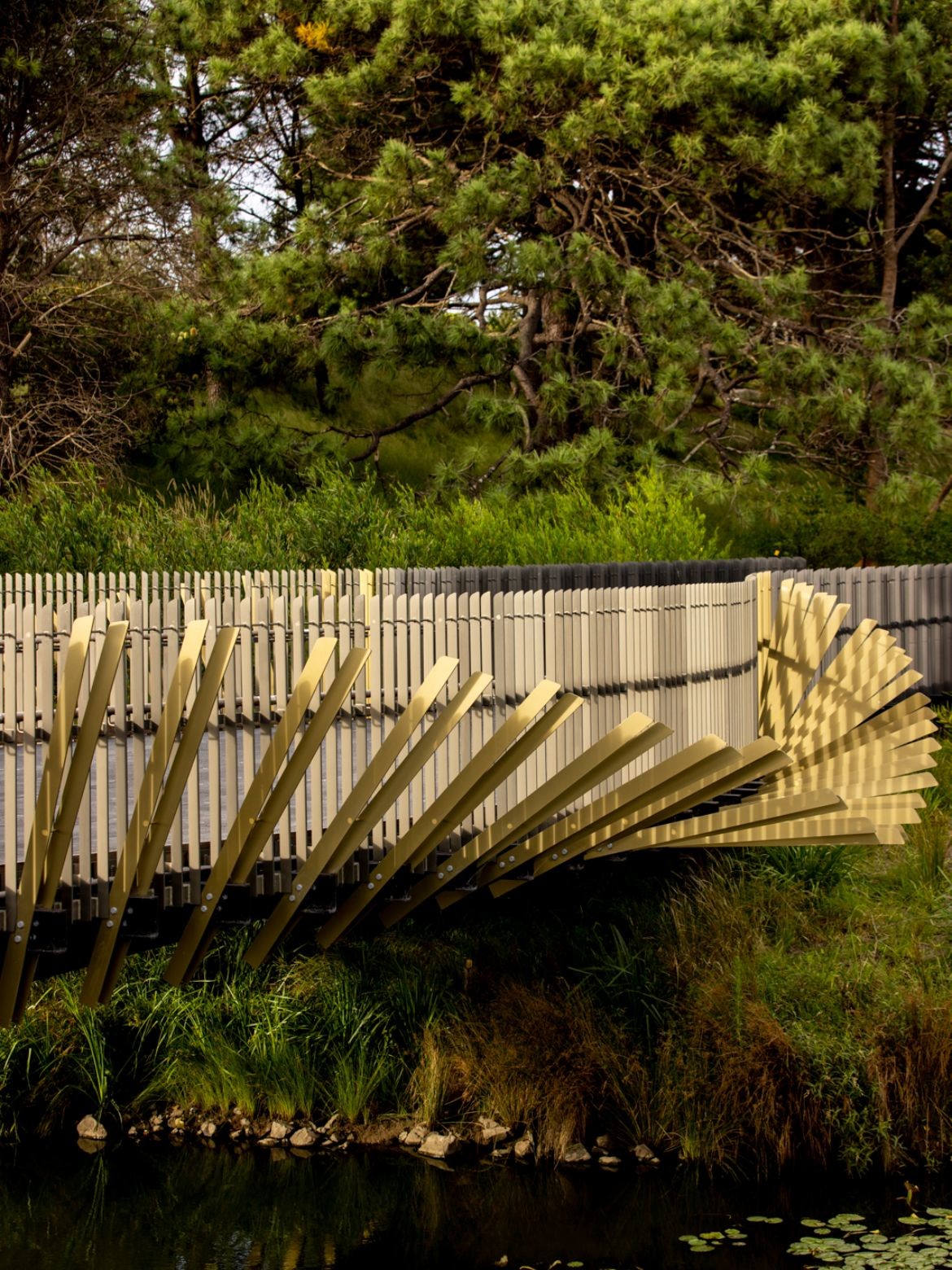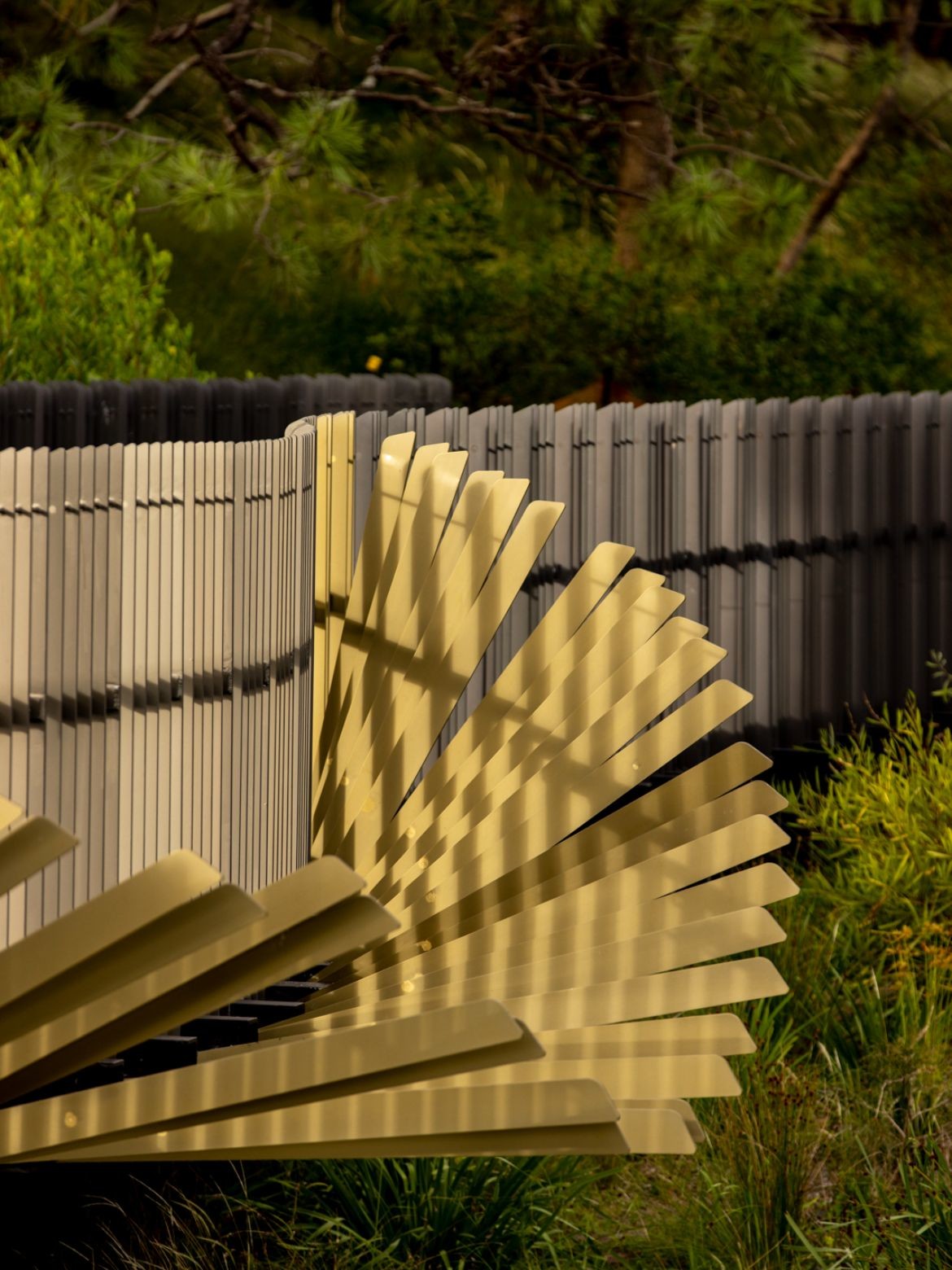As with every discussion about a project with , the conversation soon turns to the fundamentals of architecture. What role can architecture play, for instance, in caring for and healing Country? This line of thinking was particularly prominent in the design for Bara Bridge in Sydney’s Centennial Park.
“When we started this project several years ago, there was no – as far as we were aware – acknowledgement of Indigenous history in the park at all. Thankfully, that has since been changed,” says Crawford.

“A series of elaborate gateways into the park had been established in the past as part of a celebration of European history, each of them with substantial sandstone pediments and iron posts and often named after famous Australians. We thought: wouldn’t it be wonderful to have a gateway to celebrate the presence of Indigenous people?”
This was one of a number of conceptual spurs which the project responded to and of which it was an expression. In particular, the history of the eel at the site was used as inspiration in a process of consultation with designers, leading ultimately to the title – bara meaning ‘eel’ in the local language. Quite amazingly, the migratory patterns of the eels found here include making their way to New Caledonia.
Related:

Architecturally, to conceptualise one archetype (bridge) as another (gateway) is an interesting move. With the fluid shaping of the balustrades, the passer-by seems to move through the bridge as much as over it; it certainly marks an entrance to the park.
“The balustrade provides the expression and form of the bridge – it swells outwards in the centre like the belly of a fish or eel filled with eggs, providing a spot for people to stand and look down at the eels in the water,” says Crawford.

This fluidity extends beyond the form and into the choice of materials too. Anodised aluminium, for instance, has been chosen to evoke the shimmer of a creature’s movement in the water. Bara Bridge in this way becomes almost figurative architecture, representing the subject of its inspiration in the very form and appearance of the structure (albeit with a bit more nuance than a Frank Gehry fish).
The bridge touches its surroundings lightly, with a pair of posts supporting it from below. It seems to fit well into its environment and catches the light beautifully.
A bridge is fundamentally about getting from A to B but this, and the gateway’s, archetypal clarity doesn’t preclude the presence of beauty or depth in architecture. With rigorous conceptual thinking and sensitive research, a practical and historical poetics can take form. Whether it’s easing the journey of a commuter or providing a thoughtful spot to engage with nature, Bara Bridge forms a lasting contribution to Sydney’s prestigious parklands.
Sam Crawford Architects
Photography
Brett Boardman




We think you might also like this story on .
The post appeared first on .